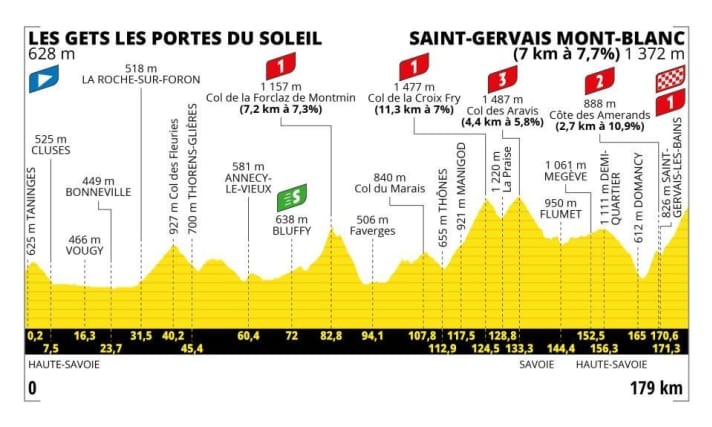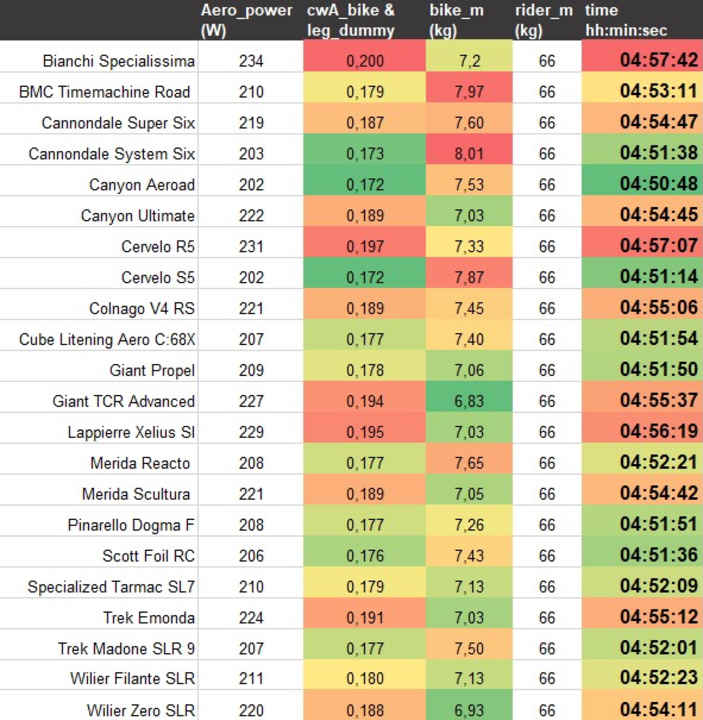
Tour de France 2023 - Stage 15: Lets Gets les Portes du Soleil - Saint-Gervais Mont-Blanc | 179 Kilometres

The third mountain stage in a row is once again breakaway terrain. There are countless climbs to climb, making the race confusing. The battle for the overall classification is not likely to become an issue until the final climb to Le Bettex. This begins with a ramp that rises up to 17 percent directly from the valley. 237 meters in altitude first lead the riders up the Cote des Amerands before a short intermediate descent leads to the foot of the actual final climb of stage 15 of the Tour de France 2023. The bosses are expected to be relatively fresh, slamming up the steep section on the back wheels of their helpers. As the race progresses, we expect the leaders to gradually thin out until Tadej Pogacar, Jonas Vingegaard & Co are among themselves. Whether breakaways can race for the stage win will depend on their time cushion. The GC riders will need around 26 minutes for the entire climb and will presumably be four minutes faster than any escapees who can make the climb without breaking.
Attacks by the GC riders will probably be launched only in the last three and a half kilometres on stage 15 of the Tour de France 2023, when the mountain becomes steeper again. Massive changes in the overall standings are not to be expected, because the way to the finish is not far then.
Tour de France 2023: Everything can change in one moment
But: This is the biggest bike race in the world and it is not completely predictable. Crashes or surprising coalitions - the race can always take a completely different course than expected. And given the tight time gaps, the situation at the front can also change accordingly quickly.
Which bike would be the best for these imponderables? An all-rounder, like the Specialized Tarmac, which is not at the top in any discipline, but is good everywhere? Or is stage 15 of the Tour de France 2023 predestined for particularly lightweight bikes without aero qualities? Or is there a scenario where the aero bike is even faster? We simulate the entire stage to answer this question.
Number of the day: 6:54 minutes
The simulation shows that on this mountain stage, once again an aero setup would result in the fastest overall ride time. Calculated over the entire course, a breakaway would be 6:54 minutes faster on the Canyon Aeroad than on the Bianchi Specialissima, which is 300 g lighter. Lightweight bikes have the potential to offer a small advantage in attacks on particularly steep terrain, such as the ramp at the start of today’s final climb. It’s interesting to note that even the superstars in the peloton are predominantly riding bikes that are heavier than the minimum weight of 6.8 kilograms mandated by the UCI.
The (almost) complete field at a glance

*) The calculations are based on the bikes tested by TOUR in the laboratory and wind tunnel. The bikes at the Tour de France may differ in details. Of course, we have not yet been able to examine last-minute prototypes either.
Our Expert

Robert Kühnen studied mechanical engineering, writes for TOUR about technology and training topics and develops testing methods. Robert has been refining the simulation calculations for years, they are also used by professional teams.
- TOUR Tech briefing stage 13
- TOUR Tech briefing stage 12
- TOUR Tech briefing stage 11
- TOUR Tech briefing stage 10
- TOUR Tech briefing stage 9
- TOUR Tech briefing stage 8
- TOUR Tech briefing stage 7
- TOUR Tech briefing stage 6
- TOUR Tech briefing stage 5
- TOUR Tech briefing stage 4
- TOUR Tech briefing stage 3
- TOUR Tech briefing stage 2
- TOUR Tech briefing stage 1
